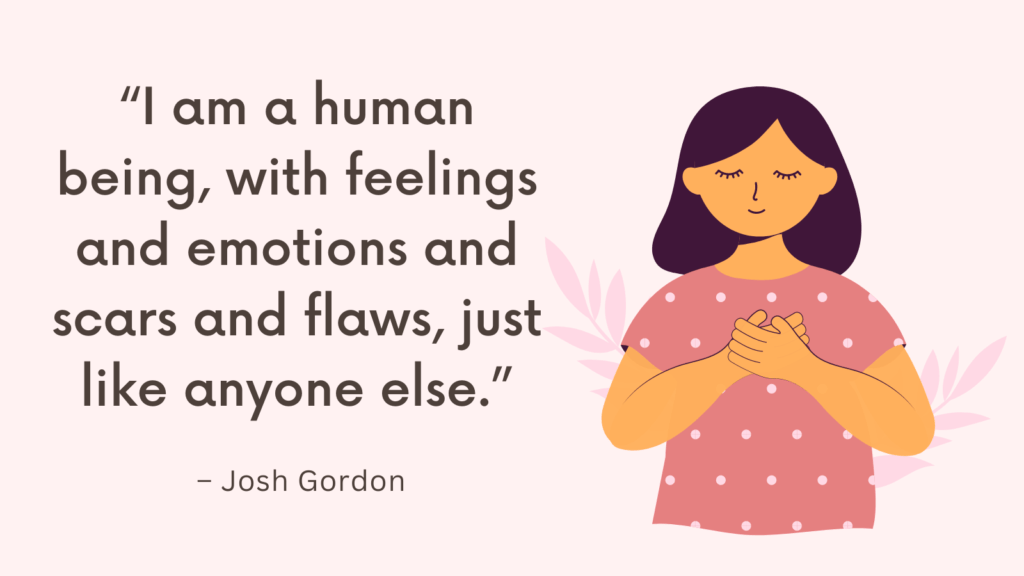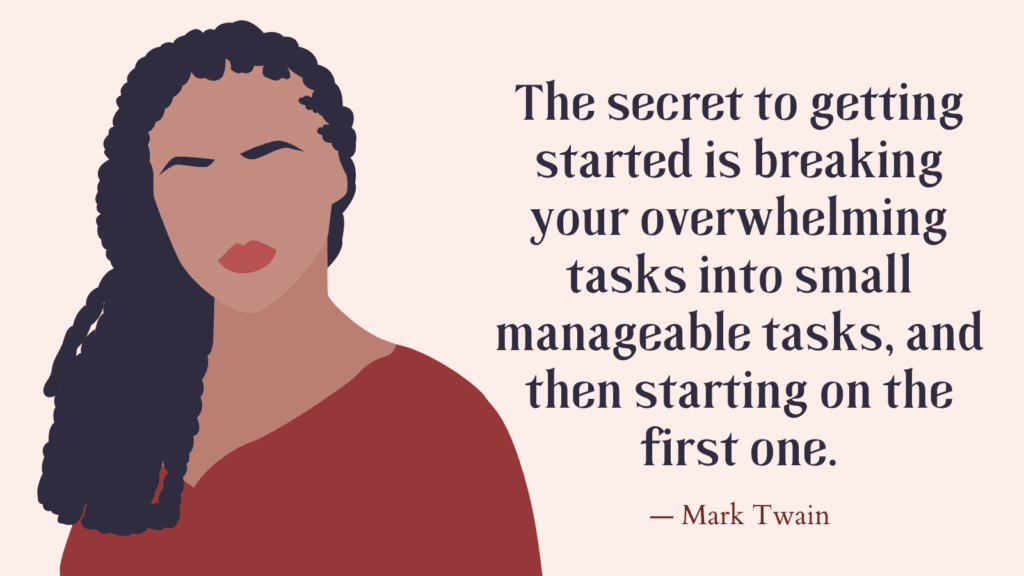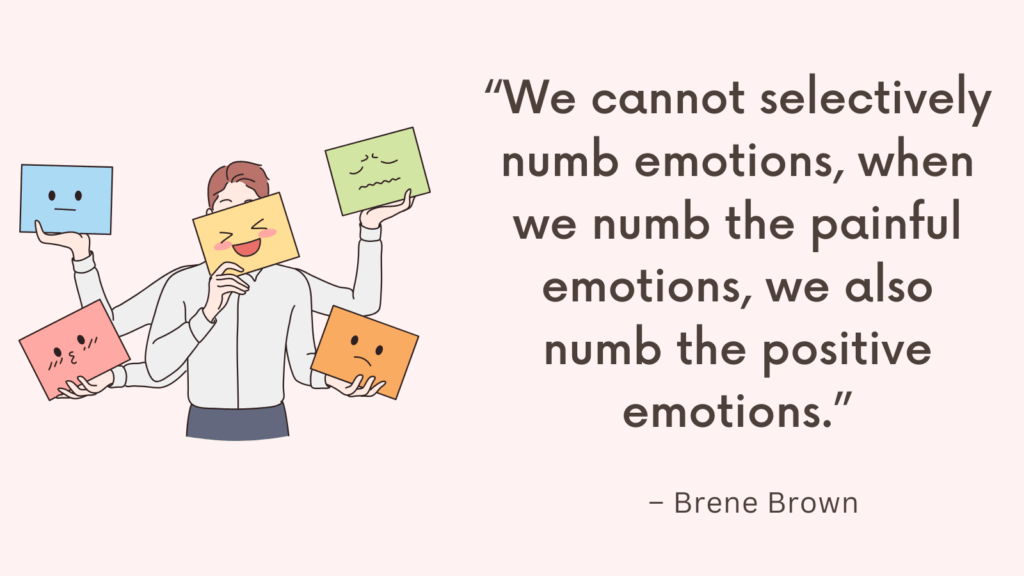In this post, you’ll learn all about ADHD burnout cycle.
What Is ADHD?
ADHD, or Attention-Deficit/Hyperactivity Disorder, is a neurodevelopmental disorder that typically begins in childhood and can continue into adulthood.
It is characterized by difficulties with attention, impulse control, and hyperactivity.
ADHD is a complex condition with various subtypes and can affect individuals differently.
The three main types of ADHD are:
1. Predominantly Inattentive Presentation: Individuals with this presentation have challenges primarily related to attention and focus. They may struggle to sustain attention, follow instructions, organize tasks, or complete assignments.
2. Predominantly Hyperactive-Impulsive Presentation: People with this presentation display more noticeable hyperactivity and impulsivity. They may have difficulty sitting still, constantly fidget, interrupt others, and act impulsively without thinking of potential consequences.
3. Combined Presentation: This type encompasses a combination of both inattentive and hyperactive-impulsive symptoms.
It’s important to note that ADHD symptoms vary from person to person.
Some common signs of ADHD include:
– Difficulty paying attention or staying focused on tasks
– Easily distracted or frequently making careless mistakes
– Impulsivity and acting without considering consequences
– Restlessness and excessive physical activity
– Difficulty organizing tasks or completing assignments
– Forgetfulness and trouble with time management
Diagnosis of ADHD usually involves a comprehensive evaluation by a qualified healthcare professional, such as a psychologist or psychiatrist.
Various treatment approaches can help manage symptoms, including medication, therapy (such as cognitive-behavioral therapy), and implementing strategies to improve organization, time management, and coping skills.
Related: How To Manage Time With ADHD? Best 17 Time Management Tips For ADHD Adults
What Is ADHD Burnout?
ADHD burnout refers to a state of mental, emotional, and physical exhaustion that can occur in individuals with Attention-Deficit/Hyperactivity Disorder (ADHD).
It is often the result of prolonged periods of chronic stress, overwhelming responsibilities, and trying to cope with the everyday challenges associated with ADHD.
Here are some signs that may suggest you are experiencing ADHD burnout:
1. Chronic fatigue: Feeling exhausted despite getting adequate sleep and rest.
2. Increased difficulty concentrating: Finding it harder to focus or sustain attention on tasks.
3. Decreased productivity: Struggling to complete tasks efficiently or meet deadlines.
4. Heightened levels of stress: Feeling overwhelmed, anxious, or irritable more frequently.
5. Emotional dysregulation: Experiencing mood swings, irritability, or feeling emotionally drained.
6. Reduced motivation and interest: Losing enthusiasm for activities you typically enjoy.
7. Reduced cognitive function: Experiencing brain fog, forgetfulness, or difficulty with decision-making.
8. Physical symptoms: Experiencing headaches, muscle tension, or digestive issues due to chronic stress.
9. Increased sensitivity to stimuli: Feeling easily overwhelmed by noise, light, or other sensory inputs.
10. Withdrawal and isolation: Preferring to spend more time alone and withdrawing from social interactions.
Related: How To Help A Child With ADHD Focus Without Medication? Best 21 ADHD Self-Help Techniques
What Is ADHD Burnout Cycle?
ADHD burnout refers to a state of emotional, mental, and physical exhaustion that can occur as a result of chronic stress and the demands of managing ADHD symptoms.
The ADHD burnout cycle commonly follows these stages:
1. Hyperfocus and Overcommitment
At this stage, individuals with ADHD often become hyperfocused on tasks or activities that capture their interest, leading them to overcommit themselves.
They may take on too many responsibilities or projects without considering the potential impact on their energy and well-being.
2. Struggling to Meet Expectations
As the demands and responsibilities pile up, individuals with ADHD may find it increasingly challenging to meet expectations.
They may experience difficulties with time management, organization, and completing tasks, which can lead to feelings of frustration, guilt, and self-criticism.
3. Increased Stress and Fatigue
The ongoing struggle to meet expectations while managing ADHD symptoms can lead to heightened stress levels.
This chronic stress can then contribute to increased fatigue, both mentally and physically. Individuals may feel overwhelmed, exhausted, and have difficulty concentrating.
4. Decreased Motivation and Productivity
The mounting stress and fatigue can negatively impact motivation and productivity. People may find it harder to stay focused, meet deadlines, or maintain the same level of performance they once had.
This decrease in productivity can further contribute to feelings of frustration and self-doubt.
5. Emotional Exhaustion and Withdrawal
At this stage, individuals with ADHD may experience emotional exhaustion.
They may feel emotionally drained, irritable, and demotivated.
Additionally, they may withdraw socially, feeling ashamed or embarrassed about their difficulties, which can lead to feelings of isolation.
6. Quitting
At this stage, individuals with ADHD may abandon the task or activity.
They may experience a sense of relief now that the weight is off their, but may still struggle with feelings of guilt.
Understanding the ADHD burnout cycle can help individuals with ADHD identify signs of burnout and take proactive steps to prevent or address it.
Related: Best 10 Books On ADHD For Parents
Common Triggers of ADHD Burnout
There are several common triggers that can contribute to ADHD burnout. It is important to note that individual experiences may vary, but here are some common triggers:
1. Overcommitment: Taking on too many responsibilities or tasks without considering the impact on energy levels and well-being can lead to burnout. Setting realistic expectations and learning to say no when necessary is important.
2. Chronic Stress: High levels of stress, whether related to work, relationships, or personal challenges, can contribute to burnout. People with ADHD may experience additional stress due to difficulties with time management, organization, and meeting expectations.
3. Lack of Structure and Routine: A lack of structure and routine can make it difficult for individuals with ADHD to manage their symptoms effectively. Without a clear plan or schedule, it can be challenging to stay organized, meet deadlines, and maintain focus, resulting in increased stress and burnout.
4. Emotional and Cognitive Demands: Managing and regulating emotions, as well as coping with executive functioning difficulties, can be mentally taxing. The constant effort required to adapt and navigate these challenges can contribute to burnout.
5. Perfectionism and Fear of Failure: Individuals with ADHD often face pressure to perform at a high level, which can lead to perfectionism and an intense fear of failure. This fear can create additional stress, self-doubt, and ultimately contribute to burnout.
6. Lack of Support: Having a strong support system in place can be vital for managing ADHD and preventing burnout. Without adequate support from family, friends, or professionals, individuals may feel overwhelmed, isolated, and more susceptible to burnout.
It is important to recognize and address these triggers to prevent or manage burnout effectively.
Related: Are You a Procrastinator Quiz? (+ Best 40 Tips To Stop Putting Things Off)
How to Prevent ADHD Burnout Cycle?
Preventing the ADHD burnout cycle involves implementing strategies to manage stress, maintain self-care, and improve overall well-being. Here are some suggestions:
1. Establish a structured routine
People with ADHD often struggle with managing their time and staying organized, causing stress and exhaustion that can lead to a burnout cycle.
By creating a structured routine, you can effectively manage your tasks, reduce overwhelm, and prevent burnout.
Start by setting specific waking and sleeping times to regulate your sleep schedule. This consistency will improve your overall energy levels and help you stay focused throughout the day.
Additionally, create a daily schedule that includes designated time slots for work, breaks, hobbies, and self-care.
Avoid overloading your schedule with too many tasks or commitments, as this can lead to stress and burnout.
2. Set realistic expectations
A common trap individuals with ADHD fall into is overcommitting themselves and having unrealistic expectations about what they can accomplish.
It’s important to recognize your limitations and prioritize tasks accordingly.
For example, rather than expecting to finish an entire project in one day, aim to complete a specific portion each day.
By setting achievable goals, you can avoid becoming overwhelmed and reduce the risk of burnout.
Remember, progress is better than perfection.
Related: Best 15 Stress Relief Toys For Your Wellbeing
3. Break tasks into manageable chunks
Taking on large or complex tasks can be overwhelming for individuals with ADHD, leading to frustration, exhaustion, and ultimately burnout.
By breaking tasks down into smaller, more manageable parts, it becomes easier to stay focused and engaged.
For example, if someone with ADHD is working on a project, they can start by outlining the steps needed to complete it and then tackle each step individually.
This approach allows them to maintain momentum while avoiding feeling overwhelmed.
Additionally, setting specific goals and deadlines for each task can help create a sense of accomplishment and keep motivation high.
4. Prioritize and delegate
To prevent this burnout cycle, it is crucial to prioritize tasks and delegate whenever possible.
Delegate tasks to family members, friends, or colleagues who can provide support in areas where you may struggle or feel overwhelmed.
For example, if organizing schedules and appointments is a challenge, consider asking a family member to help or using technology tools like calendar apps or reminder systems.
Related: Compassion Fatigue Self Test
5. Practice effective time management
One effective approach is to use checklists or to-do lists, which help break down large tasks into smaller, more manageable steps.
Another helpful technique is to utilize time-blocking, where specific periods are dedicated to particular activities. This can help individuals stay focused and limit distractions.
Additionally, setting realistic goals and deadlines is important so as not to put unnecessary pressure on oneself.
6. Use organizational strategies
Utilizing tools like calendars, to-do lists, and reminders can help with organizing responsibilities and keeping track of important deadlines.
Developing a system for prioritizing tasks can further assist in managing time effectively.
For example, color-coding tasks based on urgency or importance can help prioritize what needs immediate attention versus what can be done later.
Additionally, creating designated spaces for work or study can minimize distractions and improve focus.
Related: Circle of Control (+FREE Worksheet Download PDF)
7. Build in regular breaks
Taking short, frequent breaks can help individuals with ADHD recharge their energy levels, maintain focus, and avoid becoming overwhelmed.
These breaks could include engaging in physical activity, practicing mindfulness or deep breathing exercises, or simply stepping away from the task at hand for a few minutes.
For example, someone working on a project may set a timer to remind themselves to take a 5-minute break every hour, during which they could stretch, listen to music, or engage in a calming activity.
By incorporating these breaks into their routine, individuals with ADHD can improve their overall productivity, manage their energy levels more effectively, and reduce the risk of burnout.
8. Engage in stress-reducing activities
Engaging in activities that help alleviate stress is crucial for maintaining balance and preventing burnout.
Examples of stress-reducing activities could include practicing mindfulness or meditation, engaging in regular physical exercise, pursuing hobbies and interests, and spending time in nature.
These activities can provide an opportunity to relax, unwind, and recharge, allowing individuals with ADHD to better manage their symptoms and minimize the risk of burnout.
It is essential to find activities that resonate with each person personally, as what works for one individual may not necessarily work for another.
Incorporating stress-reducing activities into one’s daily routine is not only beneficial for preventing ADHD burnout but also for promoting overall well-being and mental health.
Taking the time to engage in activities that bring joy and relaxation can help maintain a positive mindset and improve focus and productivity in other areas of life.
Related: Am I Addicted To My Phone Quiz (+Digital Detox Challenge)
9. Seek support
It is crucial to remember that you are not alone in managing ADHD, and there are resources available to help ease the burden.
One avenue for support is therapy or counseling. A trained professional can provide guidance, coping strategies, and help to identify triggers and patterns.
Additionally, joining support groups or online communities can connect you with others who are experiencing similar challenges. Sharing experiences, tips, and advice with peers can provide much-needed empathy and understanding.
Building a strong support system of friends and family who are knowledgeable about ADHD can also play a vital role. They can offer encouragement, practical help, and act as sounding boards when you need to talk things out.
Remember, seeking support is not a sign of weakness; it is a proactive step towards self-care and preventing burnout.
Conclusion
ADHD burnout is a term used to describe the state of physical, mental, and emotional exhaustion often experienced by individuals with ADHD who consistently struggle with managing their symptoms.
It can manifest as feelings of overwhelm, decreased motivation, difficulty concentrating, and a sense of being mentally drained.
Preventing ADHD burnout requires ongoing effort. It’s important to be patient and compassionate with yourself as you navigate this journey.



